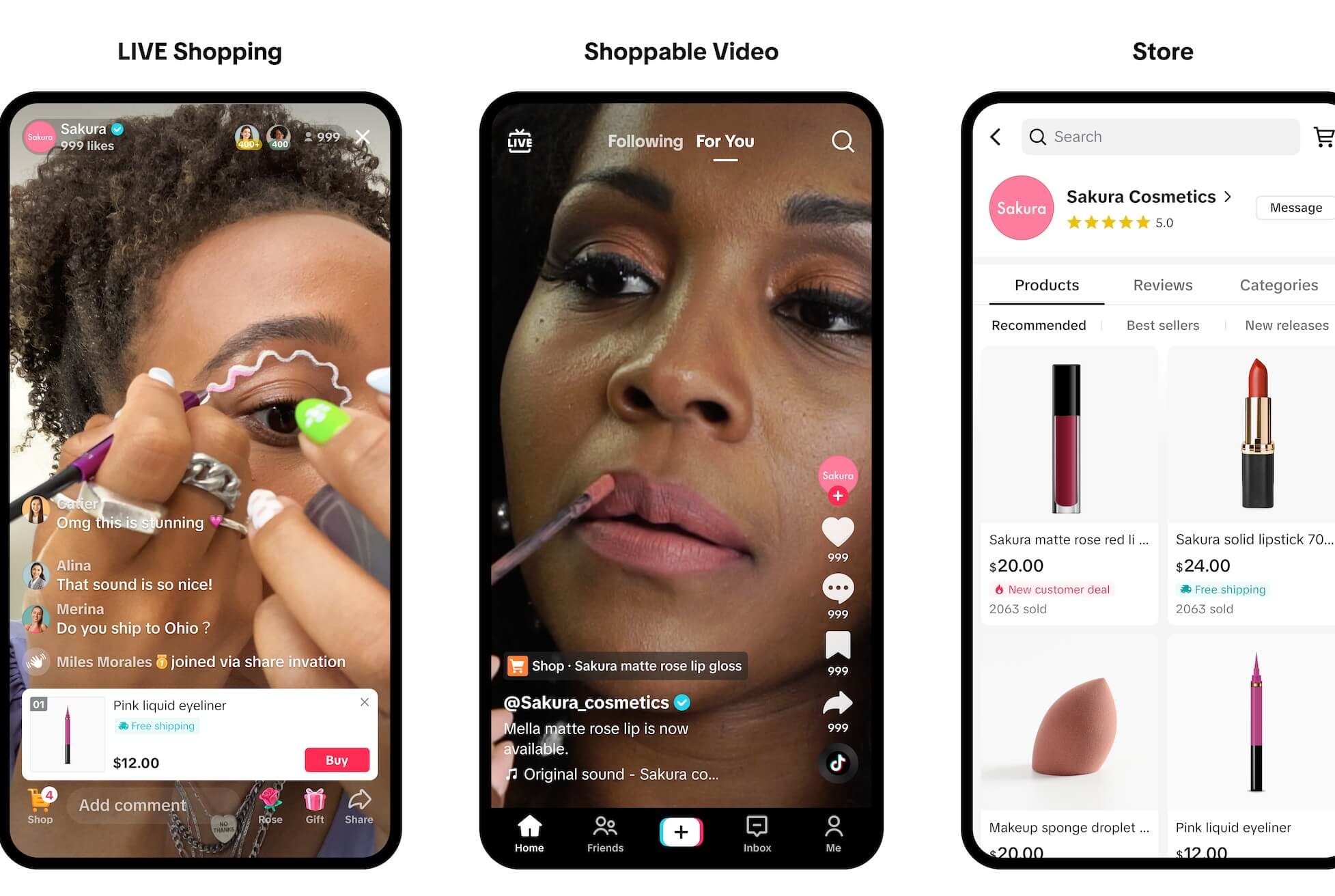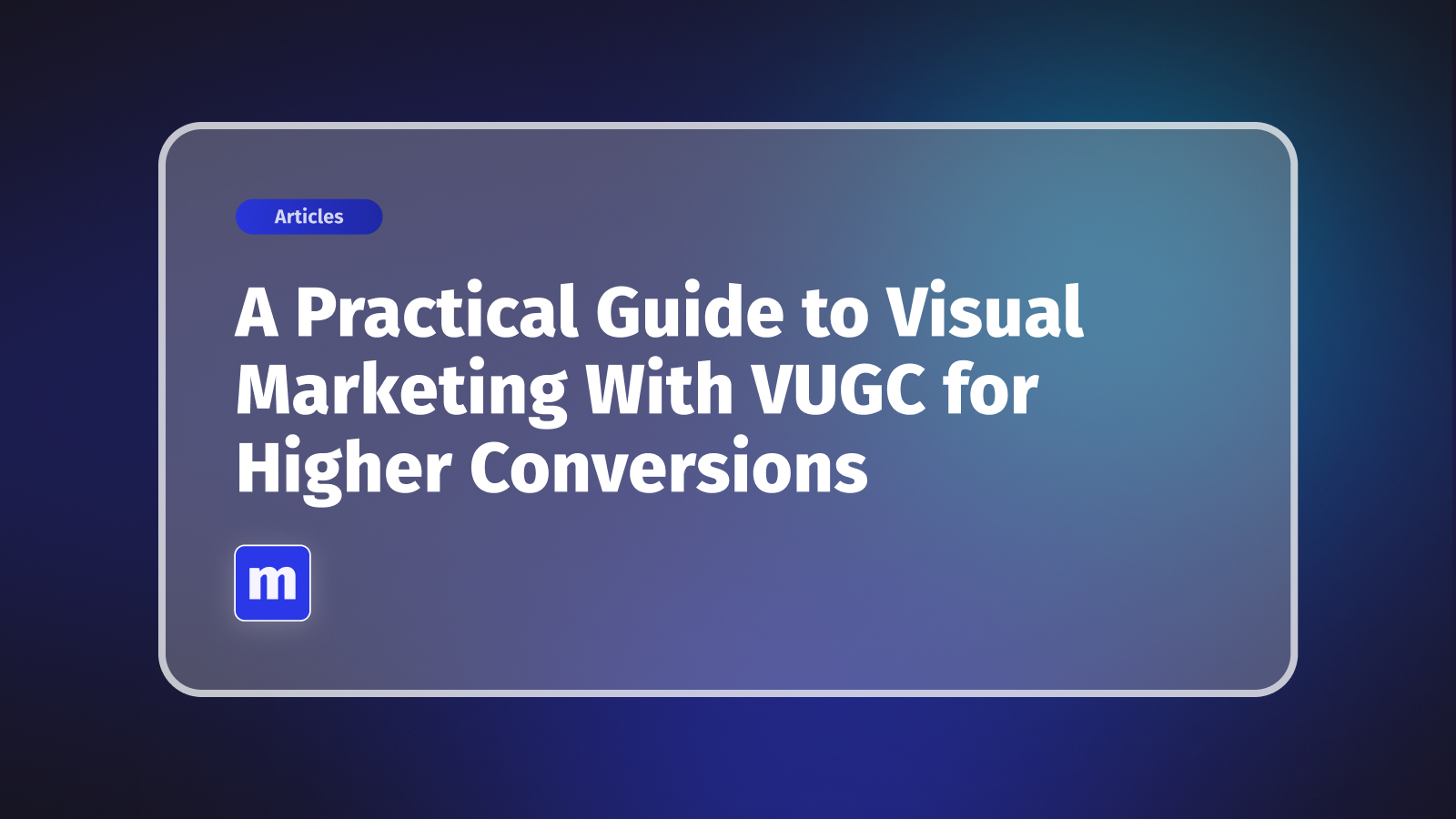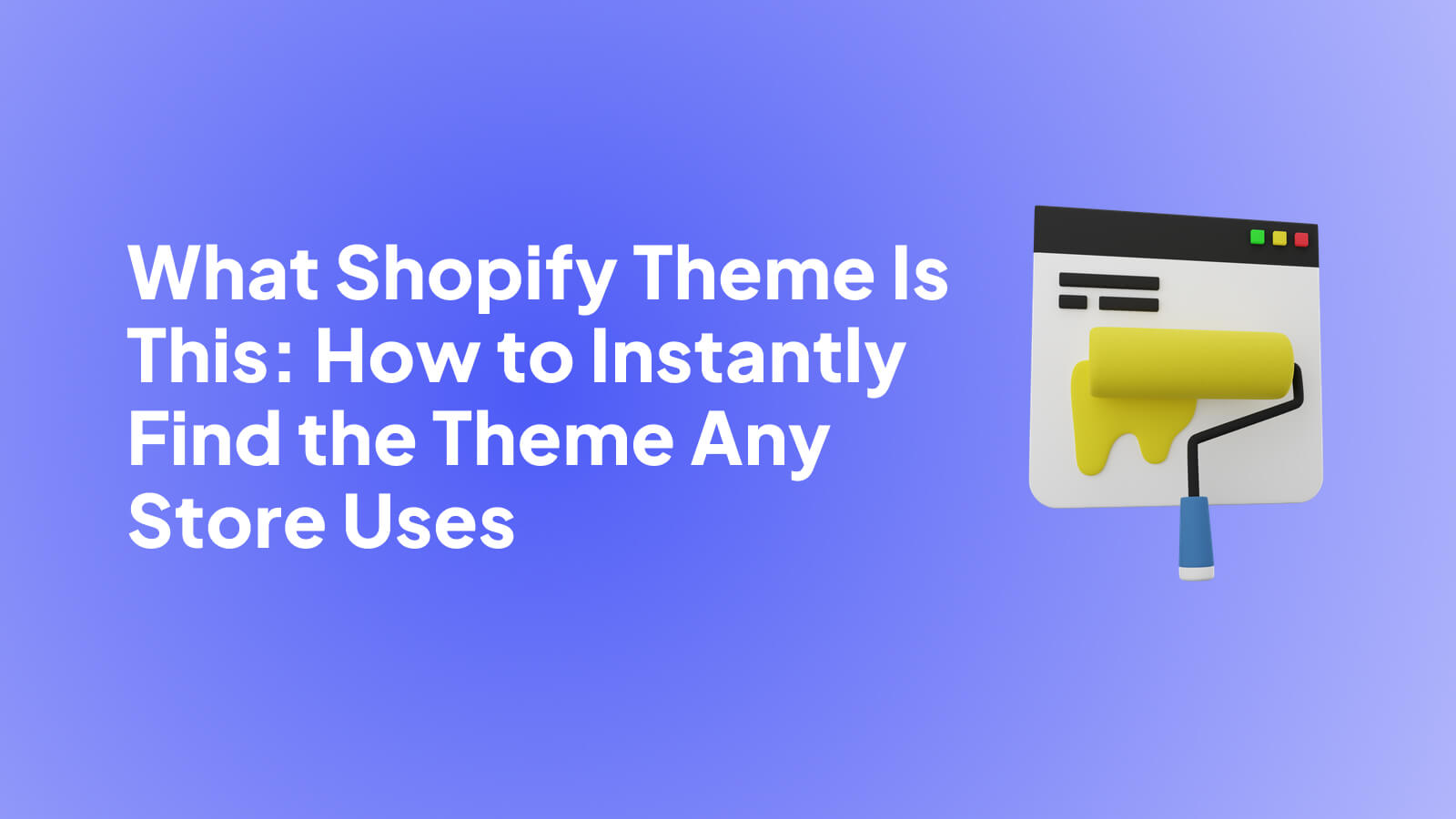
Table of Contents:
- Introduction: The rise of shoppable videos
- The core differences: TikTok shoppable video vs. Instagram Shopping
- Audience behavior: Who’s more likely to buy?
- Algorithm & discovery: Which platform gets your products in front of more buyers?
- Ad costs & ROI: Which platform is more cost-effective?
- What type of content sells best on each platform?
- The final verdict: Which platform drives more sales
- Conclusion: What’s next for social commerce?
Scrolling through social media used to be all about entertainment—now, it’s a full-blown shopping experience. Short-form videos have completely transformed how people discover and buy products, and no two platforms have embraced this shift quite like TikTok and Instagram.
Both platforms now offer shoppable video features, allowing brands to tag products directly in videos, making it easier than ever for users to buy with just a few taps. But while Instagram has long been a hub for curated shopping experiences, TikTok shoppable video is changing the game with its fast-paced, trend-driven approach to commerce.
So, which platform actually delivers more sales? Should brands focus their marketing dollars on TikTok shoppable video, or does Instagram still lead the way when it comes to social commerce?
In this post, we’ll break down the key differences between TikTok shoppable video and Instagram Shopping—comparing audience behavior, algorithms, ad costs, and conversion rates—to help you decide where to invest for maximum ROI.
The Core Differences: TikTok Shoppable Video vs. Instagram Shopping
When it comes to shoppable videos, TikTok and Instagram each have their own unique approach to integrating shopping features. Let’s dive into how they differ and what that means for e-commerce brands.
TikTok Shoppable Video
TikTok’s shoppable video experience is seamlessly integrated into the platform’s For You feed. Unlike Instagram, where shopping is often more separate from the content feed, TikTok shoppable video allows brands to showcase products in a more organic, engaging way. Users are encouraged to interact with the videos, often discovering new products while enjoying content that fits into their entertainment habits.
With TikTok shoppable video, products are tagged within videos, and users can click directly to make a purchase without ever leaving the app. This creates a smooth, frictionless shopping journey that feels native to TikTok’s entertainment-first vibe. Plus, TikTok’s algorithm is designed to deliver content (and shopping experiences) that aligns with users’ interests, increasing the chances of products going viral and reaching a highly targeted audience.

Instagram Shopping
On the other hand, Instagram Shopping is rooted in a more structured and curated shopping experience. While shoppable video on Instagram (typically in Reels) is becoming more common, Instagram’s core shopping features are still largely tied to its Shop tab and product tagging within photos and stories.
Instagram’s shopping experience allows brands to create dedicated storefronts on their profiles, showcasing products in a more organized way. Shoppable videos on Instagram feel slightly more polished and tend to be more about brand-building than TikTok’s casual, trend-driven videos. Shoppers can click on product tags in posts or videos, leading them to a product page where they can make a purchase. Instagram’s focus on visuals and aspirational content is why it’s often considered the go-to platform for lifestyle and luxury brands.
So, which platform does it better?
It ultimately depends on your brand’s style and target audience. If you’re looking for an organic, viral approach that feels like a natural extension of entertainment, TikTok shoppable video is the way to go. If your brand’s vibe is more polished and you want to curate an aspirational shopping experience, Instagram Shopping might be a better fit.
It looks like you're asking for the next section, but I believe you meant to request the section on audience behavior (the one right after the "core differences" section). Here's that section:
Audience Behavior: Who’s More Likely to Buy?
When it comes to e-commerce, understanding your audience is crucial to driving conversions. Both TikTok shoppable video and Instagram Shopping appeal to different types of shoppers, and the behavior of these shoppers can impact how well your sales perform on each platform.
TikTok Shoppers: Impulse-Driven, Younger Audience
TikTok is known for its younger demographic, with a large portion of its user base falling between the ages of 16 and 24. These users are often browsing TikTok as a source of entertainment and inspiration rather than specifically searching for products. This behavior can lead to more impulse-driven purchasing, especially when products are presented in a fun, engaging way that fits naturally into their feed.
TikTok shoppable videos are often built around trends, humor, and challenges, making them feel less like ads and more like organic content. Users on TikTok are more likely to engage with a shoppable video if it blends seamlessly with the entertainment they’re already consuming. TikTok's algorithm also boosts videos based on interest and engagement, meaning that if your video resonates with users, it has the potential to go viral, which can significantly boost sales.
Instagram Shoppers: Intentional and Brand-Conscious
While TikTok shoppable video thrives on impulse buys, Instagram’s audience is a bit different. Instagram shoppers are typically more intentional, browsing the platform with a clearer idea of what they’re looking for. This could be because Instagram has been a shopping platform for longer, and its users are more accustomed to the idea of purchasing directly from the app.
Instagram also appeals to a slightly older demographic than TikTok, with users generally ranging from 25 to 34 years old. These shoppers often use Instagram to discover new products from brands they already follow, meaning there’s a higher chance of converting existing brand fans into buyers. Since Instagram is a visual-first platform, product tags and shoppable content are often viewed in the context of a curated aesthetic, which can lead to more deliberate purchasing decisions.
Which Audience Is More Likely to Buy?
f you’re targeting a younger, trend-driven audience that loves discovering new products in a more organic, fun way, TikTok shoppable video could be your best bet. However, if your products appeal to a more intentional shopper who values curation and brand authenticity, Instagram Shopping might be the better platform to focus on.
The key takeaway is that TikTok shoppable video tends to capture the attention of shoppers who act on impulse, while Instagram attracts users who are more deliberate and brand-conscious in their purchasing decisions.
Here’s the next section, focusing on the algorithms and discovery features of TikTok shoppable video and Instagram Shopping:
Algorithm & Discovery: Which Platform Gets Your Products in Front of More Buyers?
When it comes to social media marketing, getting your products discovered by the right audience is half the battle. Both TikTok shoppable video and Instagram Shopping offer powerful discovery features, but the way they get products in front of users differs—and that can impact your sales strategy.
TikTok Shoppable Video: Viral Potential and Interest-Based Targeting
One of the standout features of TikTok shoppable video is its algorithm, which is built to surface content based on user interest, rather than the accounts they already follow. The For You page is central to this experience, and it’s where TikTok excels at promoting content to users who haven’t necessarily heard of your brand yet.
Because TikTok prioritizes engagement—such as likes, comments, shares, and watch time—it gives shoppable video a unique advantage: the potential to go viral. If your TikTok shoppable video resonates with users, the platform’s algorithm can amplify it to a wider audience, even beyond your followers. The key here is creating content that feels authentic and aligns with trends or challenges that are currently popular on the app. If your video is well-received, it has the chance to reach millions of users and generate significant traffic to your products.
Additionally, TikTok's algorithm rewards content that keeps users engaged, meaning videos that spark curiosity or encourage interaction (e.g., asking questions or prompting viewers to check out your shop) are more likely to get shown to new buyers.
Instagram Shopping: Discoverability Through Search and Exploration
Instagram, on the other hand, has a more structured discovery process. While Instagram’s algorithm does promote content to users’ feeds and Stories based on their interests, the platform also leans heavily on search and curated discovery features like the Explore page and the Shop tab.
Instagram’s shoppable videos (typically in Reels) are shown to both your followers and users who interact with similar content. However, Instagram’s discovery process doesn’t have the same viral potential as TikTok. To get your shoppable videos in front of new users, you often need to rely on organic reach, influencer partnerships, or paid ads that are tailored to specific demographics or behaviors. Instagram also allows you to add product tags to regular posts, Stories, and Reels, which can make it easier for users to find and purchase products directly from those posts.
However, Instagram Shopping has a clear advantage for brands with an established following or those in niche markets. The Shopping tab and product pages let users explore brands in a more catalog-like manner, giving them the opportunity to browse products and make purchasing decisions when they’re already in the buying mindset.

Which Platform Gets Your Products in Front of More Buyers?
In terms of sheer potential reach and viral discovery, TikTok shoppable video has the edge. The platform’s algorithm is designed to surface content that users may not already follow, allowing brands to tap into a broader audience quickly. If your content strikes the right chord, TikTok shoppable video can drive massive traffic and reach millions of users, giving your products greater visibility.
However, Instagram Shopping excels when it comes to targeting and consistency. If you already have an established following or a strong visual brand, Instagram’s algorithm can help surface your products to the right audience with greater precision. It’s especially effective for niche markets and high-intent shoppers who are ready to buy.
Ultimately, TikTok shines when it comes to viral potential and reaching new audiences, while Instagram’s structured discovery tools make it ideal for consistent, brand-driven visibility.
Ad Costs & ROI: Which Platform Is More Cost-Effective?
When deciding where to allocate your marketing budget, understanding the cost-effectiveness of each platform is crucial. TikTok shoppable video and Instagram Shopping both offer paid advertising options, but the costs, return on investment (ROI), and effectiveness can vary depending on your brand’s goals.
TikTok Ads: Cost-Per-Click & The Power of Organic Reach
TikTok’s ad platform offers several formats to promote shoppable videos, including in-feed ads, Spark Ads, and even live shopping events. The beauty of TikTok shoppable video is that it thrives on organic engagement. Even without paying for ads, brands can see massive organic reach if their content resonates with the audience. However, when paid ads are used, TikTok is known for its relatively low cost-per-click (CPC) and cost-per-mille (CPM) compared to other platforms.
TikTok’s algorithm tends to amplify engaging, entertaining content, and because its user base is highly active and hungry for new trends, ads often perform well if they feel authentic. On average, TikTok shoppable video ads can generate a high ROI, especially for brands targeting younger demographics, where engagement rates are typically higher.
However, the cost-effectiveness of TikTok shoppable video is still somewhat dependent on how well your video aligns with TikTok’s native content style. If your content feels forced or too polished, it can reduce engagement, ultimately driving up your costs.
Instagram Ads: Higher Cost But Precise Targeting
Instagram Shopping ads, on the other hand, are more expensive when it comes to cost-per-click. Instagram’s user base is more established, and the competition for ad space can be tougher. With that said, Instagram’s shoppable video ads tend to have a higher cost-per-impression (CPI) due to the platform’s focus on premium content and aspirational branding. Instagram allows for highly targeted ad placements, enabling brands to reach users based on detailed demographics, interests, and behaviors.
The ROI for Instagram shoppable video ads can still be high, especially if you already have an established brand or a niche product with a loyal following. Instagram's precise targeting options help brands connect with consumers who are already engaged and ready to purchase, which can lead to a higher conversion rate compared to other platforms. However, because of the higher cost, brands may need to invest more upfront to see significant returns.
Which Platform Is More Cost-Effective?
In terms of ad costs, TikTok shoppable video tends to be more affordable and provides a greater opportunity for organic reach. If your goal is to generate wide exposure and engage a younger, trend-driven audience, TikTok may offer a more cost-effective way to do so, especially if your content is well-suited to the platform’s style.
However, if your brand has a clear, targeted audience and you’re focused on reaching high-intent buyers, Instagram Shopping could provide a higher ROI, albeit at a higher cost. Instagram’s more structured ad options allow for more granular targeting, which can help boost conversions, even if the initial ad spend is higher.
Ultimately, TikTok shoppable video may offer better cost-effectiveness for brands looking to maximize their reach with a lower budget, while Instagram Shopping provides a more precise, albeit pricier, approach for targeting established consumers.
Apologies for that! Here's the next section without bold text, focusing on the type of content that works best on each platform:

What Type of Content Sells Best on Each Platform?
When it comes to creating shoppable videos, the type of content you produce plays a huge role in driving conversions. TikTok shoppable video and Instagram Shopping each have their own content style and approach, so knowing what works best on each platform can help you make the most out of your investment.
TikTok Shoppable Video: Trend-Driven, Fun, and Authentic
TikTok shoppable video thrives on fun, engaging, and often unpolished content. The platform’s users are drawn to videos that feel authentic and unforced. TikTok is a place where trends, memes, and challenges go viral, so creating content that aligns with these trends can dramatically increase your chances of success.
For TikTok shoppable video to perform well, it’s essential to keep things light and entertaining. Users are on TikTok primarily for entertainment, not shopping, so your content should blend seamlessly with the type of videos people already enjoy. Product demos or tutorials can also work, but they should feel less like traditional ads and more like creative content that provides value or entertainment to viewers.
It’s also important to remember that TikTok’s algorithm rewards engagement, so incorporating elements like calls to action, humor, or a strong narrative in your shoppable videos can encourage viewers to interact with your content and click through to purchase. The best-performing videos are often short, snappy, and designed to grab attention quickly.
Instagram Shopping: Polished, Aesthetic, and Influencer-Driven
Instagram, on the other hand, is a more curated platform where high-quality, visually appealing content is key. Instagram shoppable video works best when it feels polished and aligns with the platform’s visual-first approach. Product showcases and styled shots tend to perform well, especially when they highlight the quality, design, or lifestyle aspect of the product.
Influencer content also plays a significant role in Instagram shoppable video success. Influencers can create authentic, aspirational content that resonates with their followers, making it easier for brands to sell products. Influencers know how to create visually stunning, engaging content that seamlessly integrates product mentions into their lifestyle, making these videos highly effective in driving sales.
Additionally, Instagram shoppable video works well when you focus on creating a sense of exclusivity or aspirational living. Whether through high-end fashion, home decor, or beauty products, Instagram allows brands to tell a story around their product and create a visually appealing experience that encourages users to hit "buy."
Which Content Sells Best?
For TikTok shoppable video, the best content is trendy, lighthearted, and engaging. Think about creating videos that feel native to the platform’s fun, informal atmosphere, whether through challenges, viral trends, or quirky product showcases.
On Instagram, aim for polished, aesthetically pleasing videos that align with your brand's story and audience. High-quality product demonstrations, influencer collaborations, and aspirational lifestyle content tend to perform best.
By tailoring your content to each platform’s unique strengths, you can increase your chances of driving sales and maximizing the potential of both TikTok shoppable video and Instagram Shopping.
Here’s the next section with a comparison table, followed by a couple of summary bullet points:
The Final Verdict: Which Platform Drives More Sales?
To wrap things up, let’s compare TikTok shoppable video and Instagram Shopping side by side. This should help you make a clearer decision on which platform is more suited for driving sales for your brand.

Summary & Recommendation:
- If you want to reach a younger audience and create viral, trend-driven content, TikTok shoppable video offers more organic reach and a higher chance to drive sales through engagement.
- For brands with an established following or those targeting more intentional shoppers, Instagram Shopping offers better precision with targeting and a polished, brand-building shopping experience.
In conclusion, TikTok shoppable video is likely to deliver faster and broader reach, while Instagram Shopping is better suited for brands looking for steady, intentional conversions from a more refined audience.
Conclusion: What’s Next for Social Commerce?
As we’ve seen, both TikTok shoppable video and Instagram Shopping offer unique advantages for e-commerce brands, but the key to driving sales lies in understanding which platform aligns best with your brand’s goals and audience.
If you’re looking to tap into a younger, trend-driven market with the potential for viral content and organic reach, TikTok shoppable video is the way to go. Its fun, engaging format and powerful algorithm can help your products gain massive visibility and drive impulse purchases.
On the other hand, if your brand thrives on curated, high-quality visuals and you’re targeting a more intentional, loyal audience, Instagram Shopping provides the precise targeting tools and polished content format that can lead to steady, reliable conversions.
Ultimately, both platforms have their place in the social commerce landscape, and for many brands, a combination of both may be the most effective strategy. By leveraging TikTok shoppable video for reach and discovery, alongside Instagram’s established brand presence, you can maximize sales and engage shoppers at different stages of their buying journey.
The future of social commerce is bright, and as platforms like TikTok and Instagram continue to innovate, the opportunities for e-commerce brands to engage with consumers will only expand.
Related content
Turn your social content into a revenue channel
Turn your TikToks and Reels into shoppable videos and boost conversions by 3.5x.













